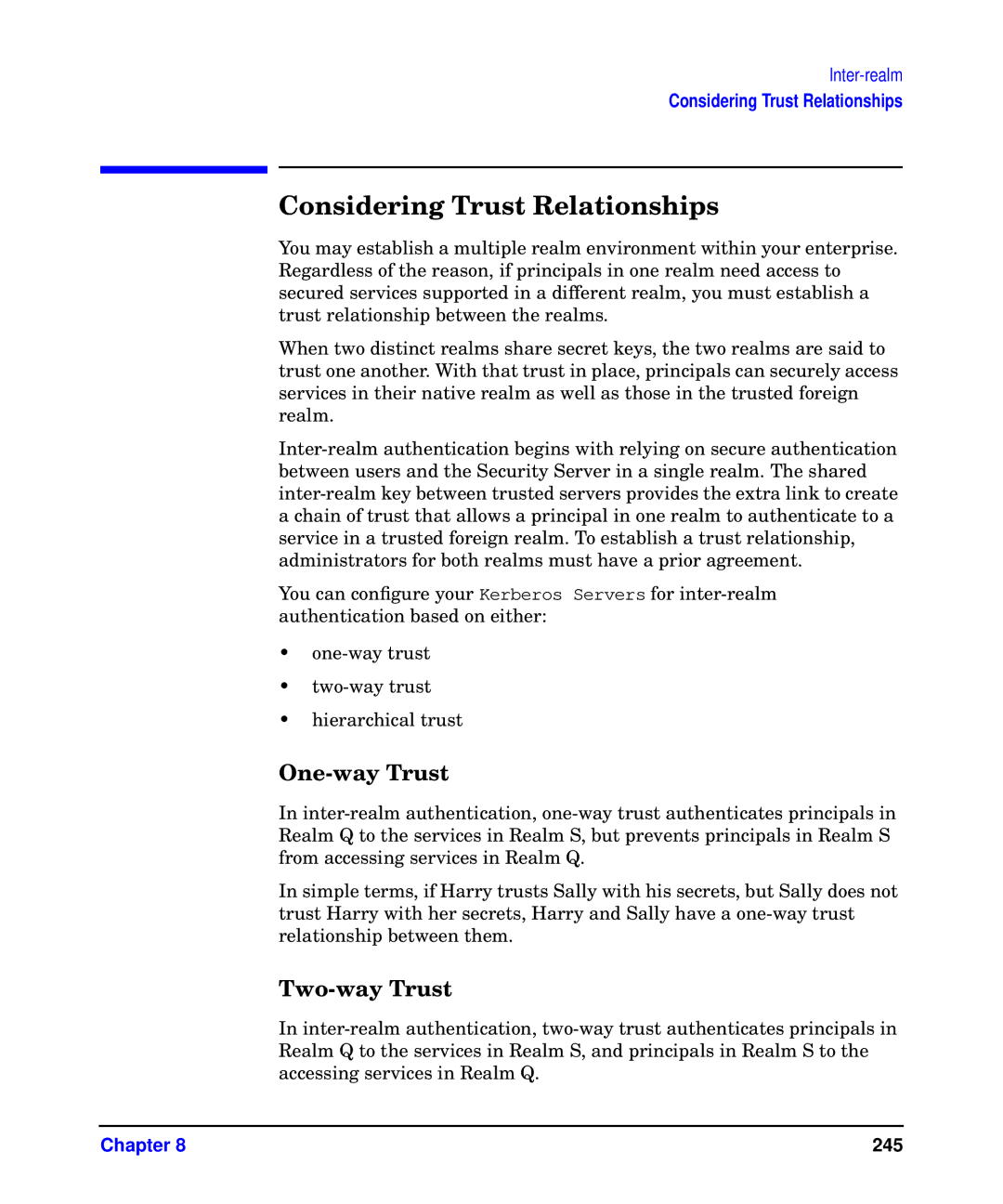
Inter-realm
Considering Trust Relationships
Considering Trust Relationships
You may establish a multiple realm environment within your enterprise. Regardless of the reason, if principals in one realm need access to secured services supported in a different realm, you must establish a trust relationship between the realms.
When two distinct realms share secret keys, the two realms are said to trust one another. With that trust in place, principals can securely access services in their native realm as well as those in the trusted foreign realm.
You can configure your Kerberos Servers for
•
•
•hierarchical trust
One-way Trust
In
In simple terms, if Harry trusts Sally with his secrets, but Sally does not trust Harry with her secrets, Harry and Sally have a
Two-way Trust
In
Chapter 8 | 245 |
